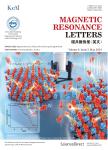Solid-state NMR reveals that oxygen tri-clusters make glass highly crackresistant
作者机构:High Magnetic Field LaboratoryCAS Key Laboratory of High Magnetic Field and Ion Beam Physical BiologyHefei Institutes of Physical ScienceChinese Academy of SciencesHefei230031China
出 版 物:《Magnetic Resonance Letters》 (磁共振快报(英文))
年 卷 期:2024年第4卷第2期
页 面:77-78页
学科分类:0809[工学-电子科学与技术(可授工学、理学学位)] 07[理学] 070205[理学-凝聚态物理] 08[工学] 0805[工学-材料科学与工程(可授工学、理学学位)] 080502[工学-材料学] 0702[理学-物理学]
基 金:supported by the National Natural Science Foundation of China(42177444 and U1932218)
主 题:crack resistance glass
摘 要:In a recent paper,advanced solid-state nuclear magnetic resonance(SSNMR)technology was employed to reveal the underlying mechanism contributing to the high hardness and exceptional resistance to fragmentation observed in certain special glasses[1].This study utilized SSNMR to analyze the atomic-scale internal structure of glass,enabling the quantification of the fraction of three-coordinated oxygen([^((3))O]).The research findings demonstrate a quantitative relationship between[^((3))O]and the resistance of glass to crack initiation.



